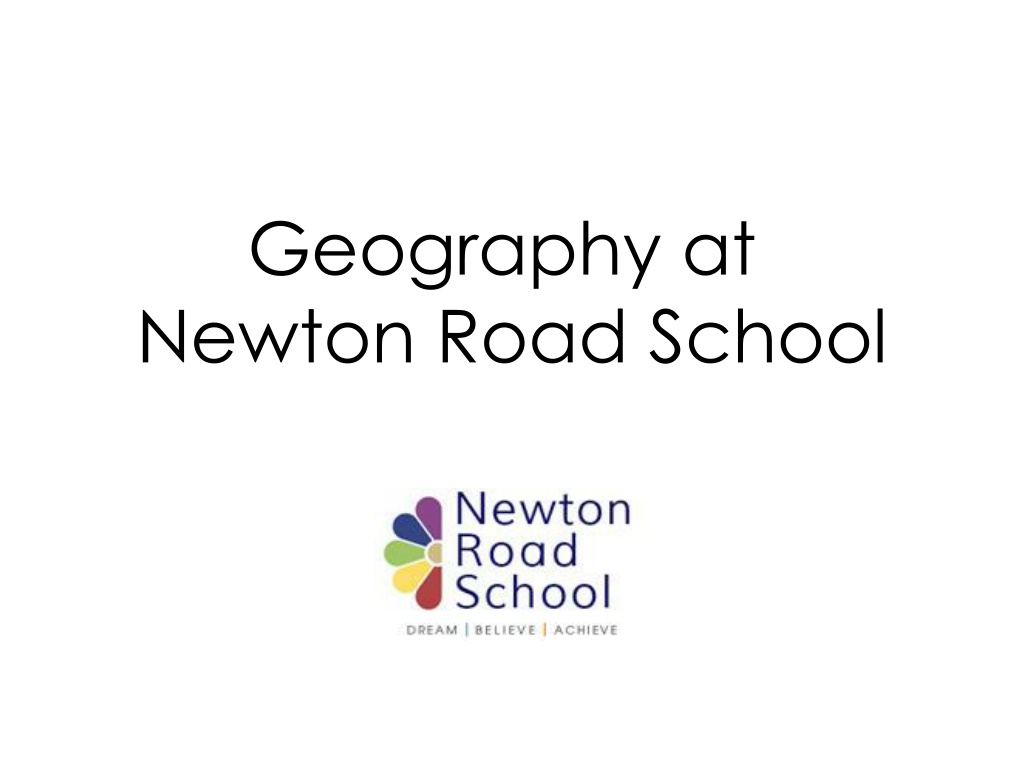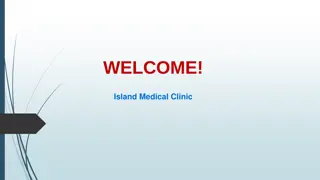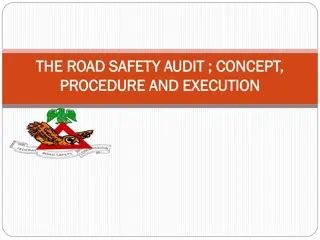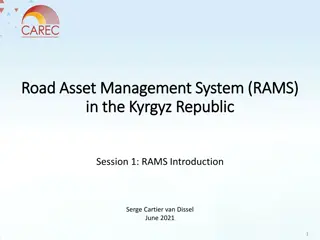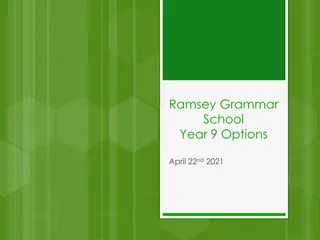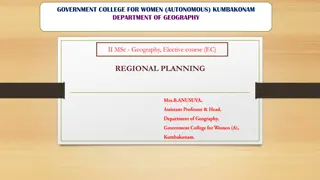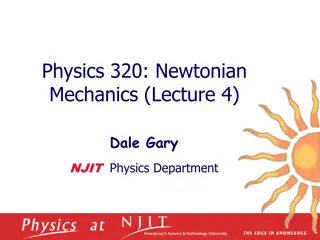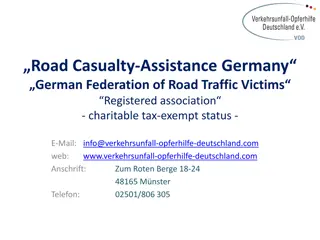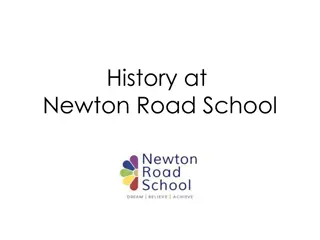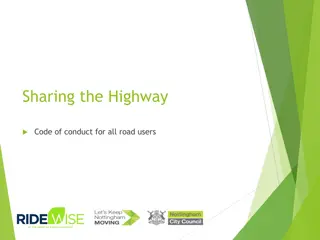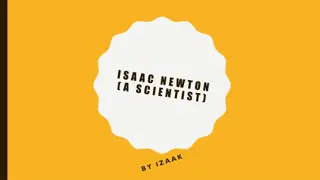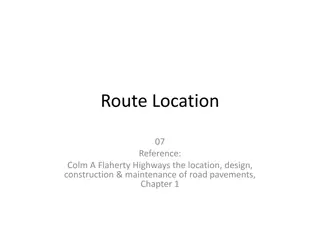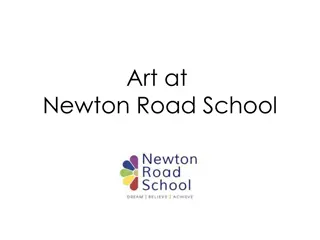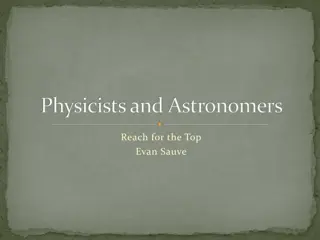Exploring Geography and History Through Themes at Newton Road School
Covering various themes across the academic year, students at Newton Road School delve into the worlds of geography and history. From exploring Antarctica to understanding the significance of map makers, and delving into the lives of iconic figures like Florence Nightingale and Mary Seacole, the school curriculum offers a rich tapestry of learning opportunities. Students also investigate their own surroundings through topics like "Me, My School, and My Road" and examine historical insights into toys and superheroes.
Download Presentation

Please find below an Image/Link to download the presentation.
The content on the website is provided AS IS for your information and personal use only. It may not be sold, licensed, or shared on other websites without obtaining consent from the author. Download presentation by click this link. If you encounter any issues during the download, it is possible that the publisher has removed the file from their server.
E N D
Presentation Transcript
Geography at Newton Road School
Term One Term Two Term Three Term Four Term Five Term Six (History) Me, My School and My Road (History) Toys (History) Superheroes: Florence Nightingale, Mary Seacole (Geography) Antarctica (Geography) Map Makers (History) Kings and Queens (Geography) The Seaside Year 1/2 Cycle A (Geography) London (History) Great Fire of London (Geography) Australia (History) Illustrations changes through time (Geography) Rivers (Geography/Sci ence) Field to Fork Year 1/2 Cycle B (History) Stone Age to Iron Age (Geography) Mountains, Volcanoes and Earthquakes (History) Roman Empire: Impact on Britain (History) Geography/Hist ory- Greece Year 3/4 Cycle A Rushden through the ages (History) Shang Dynasty (Geography) The USA (Geography) Africa (History) Benin (History) Anglo Saxons and Scots (History) Vikings and Anglo Saxons Year 3/4 Cycle B (History) Mythology through time (History) Navigation: The Titanic (History/ Science) Space (Geography) Amazing Amazon (History) Crime and Punishment Year 5/6 Cycle A (History) Conflict: World War 2 (History) (History) Our Rights (Geography) Save the planet (History/Science) Darwin/ Evolution Year 5/6 Cycle B Next Stop: Britain
Term One Term Two Term Three Term Four Term Five Term Six (Geography) Map Makers (Geography) The Seaside Year 1/2 Cycle A (Geography) London (Geography) Antarctica (Geography) Australia (Geography/Sci ence) Field to Fork Year 1/2 Cycle B (Geography) Mountains, Volcanoes and Earthquakes (Geography) Rivers Geography/Hist ory- Greece Year 3/4 Cycle A (Geography) The USA (Geography) Africa Year 3/4 Cycle B (Geography) Amazing Amazon Year 5/6 Cycle A (Geography) Save the planet (Geography/ History/ Science) Darwin: Evolution Year 5/6 Cycle B
Autumn 1 Autumn 2 Spring 1 Spring 2 Summer 1 Summer 2 Early Learning Goal Children at the expected level of development will: PCC1: To be able to name familiar places, buildings and settings. PCC1: To be able to describe familiar settings (my home, my school, my road) PCC1: To be able to name the town I live in. PCC1: To be able to use key vocabulary when making observations. PCC1: To be able to make comments about the different environments found in texts. PCC1: To be able to compare Rushden to the environments found in stories / non-fiction texts. PCC1: Describe their immediate environment using knowledge from observation, discussion, stories, non-fiction texts and maps. PCC1: To be able to use simple maps. PCC3: To be able to make comments about my life: food, home, routines, weather etc. PCC1: To be able to draw and use maps within my play. PCC3: To be able to locate land and water on a map or globe. PCC1: To be able to draw and use maps within my play. PCC1: To be able to locate features of my immediate environment on a map. PCC3: To name the country I live in. People, Cultures and Communities PCC3: To be able to name other countries in the world. PCC3: Explain some similarities and differences between life in this country and life in other countries, drawing on knowledge from stories, non-fiction texts and when appropriate maps. PCC3: To be able to recall some facts about life in other countries. . PCC3: To be able to explain some similarities and differences between life in this country and another country.
Autumn 1 Autumn 2 Spring 1 Spring 2 Summer 1 Summer 2 Early Learning Goal Children at the expected level of development will: NW1: To know the names of natural objects. NW1: To observe, explore and draw natural objects. NW2: To be able to use target vocabulary to name and describe natural and man- made features found outside. NW2: To be able to describe and make comments on the different settings found in books and nursery rhymes. NW1: To be able to make detailed observations of animals, plants and natural objects. NW1: To be able to make detailed observations of animals, plants and natural objects. NW1: Explore the natural world around them, making observations and drawing pictures of animals and plants. NW2: To be able to name different types of weather. NW2: To be able to name and describe the daily weather. NW3: To recall some purposes of water. NW2: To make comments about the similarities of my immediate environment and another environment. NW2: To recognise the similarities and differences between the immediate environment and a contrasting environment. NW3: To be able offer comments about the differences between Autumn / Winter. NW3: To be able to name the current season. NW3: To be able to make comments about autumnal changes. NW3: To know the names of the 4 seasons. NW2: Know some similarities and differences between the natural world around them and contrasting environments, drawing on their experiences and what has been read in class. NW3: To be able to explore the texture and movement of water. The Natural World NW3: To be able to talk and the differences between Autumn and Spring. NW3: To be able to describe and explore ice. NW3: To be able to make comments about the differences between Spring and Summer. NW3: Understand some important processes and changes in the natural world around them, including the seasons and changing states of matter.
Year 1/2 Cycle A
Year 1/2 Cycle A Term One Term Two Term Three Term Four Term Five Term Six Topic and focus Map Makers The Seaside Use world maps, atlases and globes to identify the United Kingdom and its countries, as well as the countries, continents and oceans studied at this key stage Name, locate and identify characteristics of the 4 countries and capital cities of the United Kingdom and its surrounding seas NC Objectives: Understand geographical similarities and differences through studying the human and physical geography of a small area of the United Kingdom, and of a small area in a contrasting non-European country Use basic geographical vocabulary to refer to key human features, including: city, town, village, factory, farm, house, office, port, harbour and shop Use simple compass directions (North, South, East and West) and locational and directional language to describe the location of features and routes on a map Identify seasonal and daily weather patterns in the United Kingdom and the location of hot and cold areas of the world in relation to the Equator and the North and South Poles Use aerial photographs and plan perspectives to recognise landmarks and basic human and physical features; devise a simple map; and use and construct basic symbols in a key Use basic geographical vocabulary to refer to key physical features, including: beach, cliff, coast, forest, hill, mountain, sea, ocean, river, soil, valley, vegetation, season and weather Use simple fieldwork and observational skills to study the geography of their school and its grounds and the key human and physical features of its surrounding environment. Use basic geographical vocabulary to refer to key human features, including: city, town, village, factory, farm, house, office, port, harbour and shop Use world maps, atlases and globes to identify the United Kingdom and its countries, as well as the countries, continents and oceans studied at this key stage.
Year 1/2 Cycle A Term One Term Two Term Three Term Four Term Five Term Six Topic Map Makers The Seaside Golden Threads Scale and Human Environments Place, Space, Scale, The Physical World and Human Environments Vertical Links EYFS PCC1 1/2B London 1/2B Antarctica 1/2B Australia 1/2B Field to Fork EYFS PCC1 EYFS PCC3 EYFS NW1 EYFS NW2 1/2B London 1/2B Antarctica 1/2B Australia 1/2B Field to Fork Horizontal Links D&T: Structures Freestanding structures Art and Design: Mixed Media Look at different parts of the seaside and use different materials/ textures to recreate this Science: Materials Let s Build! Science: Seasonal Changes Wonderful Weather Diagonal Links
Year 1/2 Cycle A Term One Term Two Term Three Term Four Term Five Term Six Topic and focus Map Makers The Seaside Know that an ocean is a huge body of salt water Knowledge A map is a picture or model of a place, normally taken from above There are different type of maps (pirate maps, ariel maps, perspective maps, OS maps, street maps) Know that a sea is a smaller body of salt water (smaller than an ocean) and is the barrier between land and ocean A compass is used on maps to help with directions, so people know where they are going A coast is an area where land and sea meet Directional language North, East, South and West An atlas is a book of maps A compass is used to follow directions The UK is made up of 4 countries England, Scotland, Wales and Northern Island A compass has 4 points North, East, South and West Ariel view maps show an above view of landmarks and features of an area The UK is boarded by the seas: The English Channel, The Irish Sea, The North Sea and also the Atlantic Ocean A plan view map is a map drawn from the perspective (view) of looking down on objects. A seaside is a place by the sea Know a street view map shows a visual representation of landmarks and local areas Seaside's are holiday resorts A seaside has physical features including: beach, cliff, coast, sea Know that a key is used to show symbols, which make it easier to read a map A seaside has human features including: harbour, port, village, shops Identify and name symbols used within a key on a map (hospital, airport, school, train station) Seaside destinations are more popular during warmer seasons in the UK and form tourist destinations during these seasons Know that a human feature is something man-made, such as buildings and roads Know that a physical (natural) feature is something that has occurred naturally like a mountain or river The UK has popular seaside destination including: Newquay, Tenby, Great Yarmouth, Giant s Causeway and Ramasaig Bay Carry out fieldwork by collecting data and information through drawings, annotations, checklists and carrying out a local walk Seaside s abroad are tourist destinations and holiday makers choose beach holidays Know how to construct a map, using a key and symbols Ariel view, buildings, countries, compass, directions, grounds, key, local, map, perspective maps, rivers, route, shops, street map, surrounded, symbols, town, village abroad, attraction, beach, cliff, coast, country, destination, harbour, holiday, human features, island, ocean, oversea, physical features, port, sea, seaside, season, tourist, town, trade, United Kingdom, village, weather Vocabulary
Year 1/2 Cycle A Term One Term Two Term Three Term Four Term Five Term Six Topic and focus Map Makers The Seaside Skills Children encouraged to ask simple geographical questions; Where is it? What's it like? Investigate their surroundings Make observations about where things are e.g. within school or local area. Use Non Fiction books, stories, maps, pictures/ photos and internet as sources of information. Investigate their surroundings Make simple comparisons between features of different places Follow directions (Up, down, left/right, forwards/backwards (Year 2 to know NESW too) Draw a map of a real or imaginary place. (e.g. add detail to a sketch map from aerial photograph) Begin to understand the need for a key. Use class agreed symbols to make a simple key. Follow a route on a map. Draw around objects to make a plan. Look down on objects to make a plan view map Learn names of some places within/around the UK. E.g. Home town, cities, countries e.g. Wales, France. Find land/sea on globe. Use teacher drawn base maps. Use large scale OS maps. Use an infant atlas Begin to spatially match places Ask simple geographical questions Use NF books, stories, maps, pictures/photos and the internet as sources of information Make appropriate observations about why things happen Make simple comparisons between features of different places
Year 1/2 Cycle B
Year 1/2 Cycle B Term One Term Two Term Three Term Four Term Five Term Six Topic and focus London Antarctica Australia Field to Fork NC Objectives: Name, locate and identify characteristics of the 4 countries and capital cities of the United Kingdom and its surrounding seas Use basic geographical vocabulary to refer to key physical features, including: beach, cliff, coast, forest, hill, mountain, sea, ocean, river, soil, valley, vegetation, season and weather. Use basic geographical vocabulary to refer to key human features, including: city, town, village, factory, farm, house, office, port, harbour and shop Use world maps, atlases and globes to identify the United Kingdom and its countries, as well as the countries, continents and oceans studied at this key stage Identify seasonal and daily weather patterns in the United Kingdom and the location of hot and cold areas of the world in relation to the Equator and the North and South Poles. Name and locate the world s 7 continents and 5 oceans Understand geographical similarities and differences through studying the human and physical geography of a small area of the United Kingdom, and of a small area in a contrasting non-European country Identify seasonal and daily weather patterns in the United Kingdom and the location of hot and cold areas of the world in relation to the Equator and the North and South Poles Use basic geographical vocabulary to refer to key physical features, including: beach, cliff, coast, forest, hill, mountain, sea, ocean, river, soil, valley, vegetation, season and weather Use basic geographical vocabulary to refer to key human features, including: city, town, village, factory, farm, house, office, port, harbour and shop Use world maps, atlases and globes to identify the United Kingdom and its countries, as well as the countries, continents and oceans studied at this key stage Name and locate the world s 7 continents and 5 oceans Understand geographical similarities and differences through studying the human and physical geography of a small area of the United Kingdom, and of a small area in a contrasting non-European country Identify seasonal and daily weather patterns in the United Kingdom and the location of hot and cold areas of the world in relation to the Equator and the North and South Poles. Use basic geographical vocabulary to refer to key physical features, including: beach, cliff, coast, forest, hill, mountain, sea, ocean, river, soil, valley, vegetation, season and weather. Use simple compass directions (North, South, East and West) and locational and directional language [for example, near and far; left and right], to describe the location of features and routes on a map. Use basic geographical vocabulary to refer to key physical features, including: beach, cliff, coast, forest, hill, mountain, sea, ocean, river, soil, valley, vegetation, season and weather. Use basic geographical vocabulary to refer to key human features, including: city, town, village, factory, farm, house, office, port, harbour and shop
Year 1/2 Cycle B Term One Term Two Term Three Term Four Term Five Term Six Topic London Antarctica Australia Field to fork Golden Threads Place, Human Environments and Scale Place, Scale, Human Environments and The Physical World EYFS PCC1 EYFS PCC3 EYFS NW1 EYFS NW2 EYFS NW3 1/2A Map Makers 1/2A- The Seaside Place, Scale, Human Environments and The Physical World Space, Human Environments and The Physical World Vertical Links EYFS PCC1 EYFS NW2 1/2A Map Makers 1/2A- The Seaside EYFS PCC1 EYFS PCC3 EYFS NW1 EYFS NW2 EYFS NW3 1/2A Map Makers 1/2A- The Seaside EYFS PCC1 EYFS PCC3 EYFS NW1 EYFS NW3 1/2A Map Makers 1/2A- The Seaside Horizontal Links Art and Design: Printing London landscape prints inspired by Ruth Allen s London sketches Art and Design: Sculpture Clay animals from Antarctica Art and Design: Painting Aboriginal artwork by Clifford Possum Tjapaltjarri D&T: Food Preparing fruit and vegetables Art and Design: Frida Kahlo Still life Science: Animals including humans Healthy Animals Science: Living things and their habitats Habitats RE: What makes some places sacred to believers? Science: Living things and their habitats Garden and allotment RE: Who made the world? PSHE: Dreams and goals Diagonal Links
Year 1/2 Cycle B Term One Term Three Term Four Term Six Topic and focus London Antarctica Australia Field to Fork That food sold and eaten in the UK comes from all over the world Knowledge The UK is made up of 4 countries: England, Scotland, Wales and Northern Ireland London is the capital city of England and the UK London is in Europe Edinburgh is the capital city of Scotland Belfast is the capital city of Northern Ireland Cardiff is the capital city of Wales A capital city is where the government for that country is based London has famous landmarks, which form tourist destinations. Landmarks include: Buckingham Palace, Big Ben, Tower of London, London Eye, St Paul s Cathedral, Houses of Parliament, The Shard and Tower Bridge The River Thames flows through London London s appearance looks different through the seasons London is larger than Rushden and offers more tourist attractions Rushden is a town A globe shows where there is land and sea on Earth A continent is a large area of land There are 7 continents on Earth Antarctica, Asia, Africa, Europe, North America, South America and Oceania The world has 5 oceans: Atlantic, Arctic, Indian, Southern and Pacific The equator is an imaginary line that runs across the centre of the globe Above the equator is the North Pole and below it is the South Pole Antarctica is found on the South Pole The temperature in Antarctica is cold all year round, unlike the UK Antarctica is the world s largest desert Antarctica is the least populated place on Earth due to no-one living their permanently Due to no-one living their permanently, the continent is largely made up of physical features (ice sheets, valleys, islands). Explorers across the globe visit the continent due to it wildlife A globe shows where there is land and sea on Earth A continent is a large area of land There are 7 continents on Earth Antarctica, Asia, Africa, Europe, North America, South America and Oceania The world has 5 oceans: Atlantic, Arctic, Indian, Southern and Pacific The equator is an imaginary line that runs across the centre of the globe Australia is south of the equator There are 6 states in Australia (New South Wales, Victoria, Queensland, Western Australia, South Australia and Tasmania) There are 2 territories in Australia Northern Territory and Australian Capital Territory A compass is used for directions There are points on a compass North, East, South and West Australian seasons are grouped by months Australia s seasons are opposite to the seasons in the UK Australian states and territories experience different weather Australia has many physical features such as; beaches, valleys, mountains, deserts, lakes, hills There is unique wildlife in Australia kangaroos, koala bears, wombats, Tasmanian devil There are different types of people who live in Australia, including aboriginal aboriginal, compass, continent, country, equator, human features, island, ocean, physical features, sea, states, territories, All food comes from plants or animals Fruit and vegetables need specific weather conditions to grow In the UK we grow fruit and vegetables, some grow underground like carrots and potatoes and others grow above the ground on plants like runner beans Farms can produce both plant and animal foods Farmers grow crops Food that we import includes; tea, rice, bananas, coconuts Food is transported to the UK, through shipping or flight There are different stages to some food. For example wheat flour bread and cow milk yogurt crops, farmer, harvesting, life cycle, planting, produce, seasons, seed, shipping, stem, trade, transport Vocabulary airport, bus, capital city, cathedral, city, country, direction, government, human feature, key, landmarks, physical feature, river, skyscrapers, tourists, town, train station, underground continent, equator, globe, North Pole, oceans, population, South Pole, wildlife
Year 1/2 Cycle B Term One Term Two Term Three Term Four Term Five Term Six Topic and focus London Antarctica Australia Field to Fork Skills Use information books/pictures as sources of information. Begin to spatially match places (e.g. recognise UK on a small scale and larger scale map) Locate and name on UK map major features e.g. London, River Thames, home location, seas Children are encouraged to ask simple geographical questions; Where is it? What's it like? Children are encouraged to ask simple geographical questions; Where is it? What's it like? Use NF books, stories, maps, pictures/ photos and internet as sources of information. Investigate their surroundings Make appropriate observations about why things happen. Make simple comparisons between features of different places Children are encouraged to ask simple geographical questions; Where is it? What's it like? Use NF books, stories, maps, pictures/ photos and internet as sources of information. Investigate their surroundings Make appropriate observations about why things happen. Make simple comparisons between features of different places Investigate their surroundings Use NF books, stories, maps, pictures/ photos and internet as sources of information
Year 3/4 Cycle A
Year 3/4 Cycle A Term One Term Two Term Three Term Four Term Five Term Six Topic Mountains, Volcanoes and Earthquakes Rivers Greece Locate the world s countries, using maps to focus on Europe (including the location of Russia) and North and South America, concentrating on their environmental regions, key physical and human characteristics, countries, and major cities NC Objectives: Describe and understand key aspects of physical geography, including: climate zones, biomes and vegetation belts, rivers, mountains, volcanoes and earthquakes, and the water cycle Identify the position and significance of latitude, longitude, Equator, Northern Hemisphere, Southern Hemisphere, the Tropics of Cancer and Capricorn, Arctic and Antarctic Circle, the Prime/Greenwich Meridian and time zones (including day and night) Use maps, atlases, globes and digital/computer mapping to locate countries and describe features studied Name and locate counties and cities of the United Kingdom, geographical regions and their identifying human and physical characteristics, key topographical features (including hills, mountains, coasts and rivers), and land- use patterns; and understand how some of these aspects have changed over time Describe and understand key aspects of physical geography, including: climate zones, biomes and vegetation belts, rivers, mountains, volcanoes and earthquakes, and the water cycle Use the eight points of a compass, four and six-figure grid references, symbols and key (including the use of Ordnance Survey maps) to build their knowledge of the United Kingdom and the wider world Use fieldwork to observe, measure, record and present the human and physical features in the local area using a range of methods, including sketch maps, plans and graphs, and digital technologies. Identify the position and significance of latitude, longitude, Equator, Northern Hemisphere, Southern Hemisphere, the Tropics of Cancer and Capricorn, Arctic and Antarctic Circle, the Prime/Greenwich Meridian and time zones (including day and night) Understand geographical similarities and differences through the study of human and physical geography of a region of the United Kingdom, a region in a European country, and a region in North or South America
Year 3/4 Cycle A Term One Term Two Term Three Term Four Term Five Term Six Topic Mountains, Volcanoes and Earthquakes Rivers Greece Golden Threads Scale and The Physical World Place, Space, The Physical World and Scale Place, Space, The Physical World and Human Environments Vertical Links EYFS PCC1 EYFS PCC3 EYFS NW1 EYFS NW2 EYFS NW3 1/2A Map Makers 1/2A- The Seaside 1/2B Antarctica 1/2B Australia 3/4B The USA 3/4B- Africa EYFS PCC1 EYFS PCC3 EYFS NW1 EYFS NW2 EYFS NW3 1/2A Map Makers 1/2A- The Seaside 1/2B London 3/4B The USA 3/4B- Africa EYFS PCC1 EYFS PCC3 EYFS NW1 EYFS NW2 EYFS NW3 1/2A Map Makers 1/2A- The Seaside 1/2B London 1/2B Antarctica 1/2B Australia 1/2B Field to fork 3/4B The USA 3/4B- Africa D&T: Mechanisms Levers and linkages D&T: Food Healthy and varied diet Horizontal Links Art and Design: Painting Van Gogh Starry night over the Rhone Science: Animals including Humans Keeping Healthy Science: States of Matter States of Matter Scientists Diagonal Links
Year 3/4 Cycle A Term Two Term Five Term Six Topic Mountains, Volcanoes and Earthquakes Rivers Greece Knowledge The Earth s structure is made from an inner core, outer core, mantle and crust The inner core is made from a mixture of metals (iron and nickel) and is around 6100c The outer core is made from a mixture of metals (iron and nickel) but is cooler than the inner core (around 4400c) The mantle is made from molten magma The crust is made from rock (granite and basalt) The crust is broken into parts (tectonic plates) which move on top of the mantle There are 7 major plates, 10 minor plates and 1 micro plate Tectonic plates move between 1cm 10cm every year Mountain ranges are formed when tectonic plates collide The tallest mountain in the world is Mount Everest There are mountain ranges across the world; The Rocky Mountains, North America; The Andes, South America; The Alps, Europe; The Himalayas, Asia Volcanoes are formed when tectonic plates collide Volcanoes are formed when tectonic plates move apart An active volcano erupted in the last 10,00 years A dormant volcano supposed to erupt again There are different volcanoes: shield, stratovolcano, A volcano is made from solid lava layers, magma chamber, crater, side vent and vent Volcanoes are found along the tectonic plates When tectonic plates move, pressure builds up and overtime is released by causing the ground to share known as an earthquake Earthquakes are measured on the Richter scale The water cycle is a naturally occurring processes. It is the way water moves around our planet The water cycle is the continuous journey of water from oceans and lakes, to clouds, to rain, to streams, to rivers and back into the ocean again. When water turns into a gas this is called evaporation When water vapour cools down it condenses into a liquid and falls to the earth as precipitation A river is a natural flowing watercourse, usually freshwater, flowing towards an ocean, sea lake or another river Rivers usually begin in uplands areas, when rain fails on high ground and begins to flow downhill (due to gravity) Rivers ben (meander) and flow across land As rivers flow, they erode land Over a long period of time rivers create valleys, gorges and canyons Small rivers are known as streams, brooks or creeks. If they flow underground they are called springs The source of a river is where it starts its journey The mouth of a river is where it ends its journey The River Nile runs through Africa, with the mouth of it at the Mediterranean Sea The River Amazon flows through South America The Volga River is the longest river in Europe and mainly runs through Russia River erode land in four ways: attrition, abrasion, solution and hydraulic action When a river is travelling faster it has more energy and causes more erosion Rivers lose energy when the sediment they are carrying is very big, when they slow down or when they get shallower The River Nene is a river in the East of England. It has 3 sources in Northamptonshire Greece is a country located in Europe Greece is bordered by Albania, Bulgaria, Turkey and Republic of Macedonia The Ionian Sea, Mediterranean Sea and the Aegean Sea surround Greece There is mainland Greece and 6000 Greek Islands, of which only 227 islands are inhabited The climate in Greece is a Mediterranean climate The capital of Greece is Athens Greece has the longest coastline in Europe Greece has many physical features including: Mount Olympus, mountains, rivers, seas and coastlines, volcanoes Human features include many ancient buildings, such as the Parthenon, The Acropolis, temples, theatres architecture, borders, climate, coastal, continent, export, harbour, human features, landscape, mainland, migration, mountain, peninsula, physical features, port, river, tourist, trade, weather Vocabulary active, altitude, climate, continent, core, dormant, erupt, fault lines, form, gas, lava, layers, location, magma, mantle, melt, molten, mountain, peak, physical features, pressure, range, summit, tectonic plates, vent, abrasion, attrition, brooks, condenses, confluence, continent, course, creeks, current, deposition, erosion, estuary, evaporation, gorges, hydraulic action, meander, mouth, ocean, physical features, precipitation, sedimentary, solution, source, spring, stream, tributary, water cycle, water vapour
Year 3/4 Cycle A Term One Term Two Term Three Term Four Term Five Term Six Topic Mountains, Volcanoes and Earthquakes Rivers Greece Skills Locate places on large scale maps, (e.g. Find UK or India on globe) Begin to match boundaries (E.g. find same boundary of a county on different scale maps.) Begin to identify significant places and environments Ask and respond to questions and offer their own ideas Locate places on large scale maps, (e.g. Find UK or India on globe) Follow a route on a large scale map. Begin to match boundaries (E.g. find same boundary of a county on different scale maps.) Draw a sketch map from a high view point Begin to identify significant places and environments Offer a reasonable explanation for some events Communicate their knowledge and understanding Ask and respond to questions and offer their own ideas. Extend to satellite images, aerial photographs Investigate places and themes at more than one scale Collect and record evidence with some aid Analyse evidence and draw conclusions e.g. make comparisons between locations photos/pictures/ maps Ask and respond to questions and offer their own ideas. Use pictures/photos and internet as sources Extend to satellite images, aerial photographs Investigate places and themes at more than one scale Collect and record evidence with some aid Analyse evidence and draw conclusions e.g. make comparisons between locations photos/pictures/ maps Locate places on large scale maps, (e.g. Find UK or India on globe) Begin to match boundaries (E.g. find same boundary of a county on different scale maps.) Recall, select and organise historical information Communicate their knowledge and understanding
Year 3/4 Cycle B
Year 3/4 Cycle B Term One Term Two Term Three Term Four Term Five Term Six Topic The USA Africa NC Objectives: Locate the world s countries, using maps to focus on Europe (including the location of Russia) and North and South America, concentrating on their environmental regions, key physical and human characteristics, countries, and major cities Understand geographical similarities and differences through the study of human and physical geography of a region of the United Kingdom, a region in a European country, and a region within North or South America Describe and understand key aspects of physical geography, including: climate zones, biomes and vegetation belts, rivers, mountains, volcanoes and earthquakes, and the water cycle Describe and understand key aspects of human geography, including: types of settlement and land use, economic activity including trade links, and the distribution of natural resources including energy, food, minerals and water Use maps, atlases, globes and digital/computer mapping to locate countries and describe features studied Use the eight points of a compass, four and six-figure grid references, symbols and key (including the use of Ordnance Survey maps) to build their knowledge of the United Kingdom and the wider world Locate the world s countries, using maps to focus on Europe (including the location of Russia) and North and South America, concentrating on their environmental regions, key physical and human characteristics, countries, and major cities Identify the position and significance of latitude, longitude, Equator, Northern Hemisphere, Southern Hemisphere, the Tropics of Cancer and Capricorn, Arctic and Antarctic Circle, the Prime/Greenwich Meridian and time zones (including day and night) Describe and understand key aspects of physical geography, including: climate zones, biomes and vegetation belts, rivers, mountains, volcanoes and earthquakes, and the water cycle Describe and understand key aspects of human geography, including: types of settlement and land use, economic activity including trade links, and the distribution of natural resources including energy, food, minerals and water Use maps, atlases, globes and digital/computer mapping to locate countries and describe features studied Use the eight points of a compass, four and six-figure grid references, symbols and key (including the use of Ordnance Survey maps) to build their knowledge of the United Kingdom and the wider world
Year 3/4 Cycle B Term One Term Two Term Three Term Four Term Five Term Six Topic The USA Africa Golden Threads Place, Space, Scale, Human Environments and The Physical World EYFS PCC1 EYFS PCC3 EYFS NW1 EYFS NW2 EYFS NW3 1/2A Map Makers 1/2A- The Seaside 1/2B London 1/2B Antarctica 1/2B Australia 1/2B Field to fork 3/4A- Mountains, Volcanoes and Earthquakes 3/4A- Rivers 3/4A- Greece Place, Space, Scale, Human Environments and The Physical World EYFS PCC1 EYFS PCC3 EYFS NW1 EYFS NW2 EYFS NW3 1/2A Map Makers 1/2A- The Seaside 1/2B London 1/2B Antarctica 1/2B Australia 1/2B Field to fork 3/4A- Mountains, Volcanoes and Earthquakes 3/4A- Rivers 3/4A- Greece Vertical Links Horizontal Links Art and Design: Painting Roger Griffiths (Local Artist) uses maps and ordnance for landscape paintings. Look at the use of colour, shapes and lines to recreate. Art and Design: Printing Tinga Tinga artwork through the artist of Noel Kapanda Science: Living things and their habitats Name that living thing! Science: Living things and their habitats Help our habitats! RE: What are the deeper meanings of festivals? Year 1/2A: Making Maps Diagonal Links EYFS Traditional Tales
Year 3/4 Cycle B Term Two Term Three Topic The USA Africa Knowledge There are three countries which make up North America: The Unites States of America, Canada and Mexico The USA is found in the Northern Hemisphere The USA has 50 states and each state is different to another Each state has it s own laws and government Americans are both citizens of their state and the USA The states are broken into regional states: West, Southwest, Midwest, South, Mid-Atlantic and New England 23 states have ocean coastlines that border the Atlantic Ocean, Pacific Ocean and Arctic Ocean There are 48 counties in England There are different weather and climates across the USA The USA and UK both experience seasons The USA has mountains, coasts, prairies, forests and deserts The USA has different physical features compared to the UK The capital city of the USA is Washington DC Each state has capital city There are many national parks in the USA Yellowstone is a national park Urbanisation of these national parks is impacting wildlife City landscapes in the USA are full of human features city skyscrapers, shops, theatres, sports stadiums City landscapes in the UK are full of human features city skyscrapers, shops, theatres, stadiums The continent of Africa is made up of 54 countries Africa can be split into 5 different regions: Western Africa, Northern Africa, Central Africa, Eastern Africa and Southern Africa Nigeria is in Western Africa Nigeria has distinct climate zones: a tropical monsoon, tropical savannah and semi - arid The population of Nigeria is 217,000,000 Africa s most populated country The main religions of Nigeria is Christianity and Islam They speak English in Nigeria Nigeria is considered a poorer country Northern Africa was originally inhabited by the Egyptians, however Muslims from the Middle East conquered much of Northern Africa and since then has been heavily influenced by Arabic and Islamic culture Morocco is in Northern Africa The high atlas mountains protects Morocco from the Sahara Moroccans ae Berber and Arab and most people are Muslim. The Berber people live in the mountains and still speak Berber language. Human features within Morocco include mosques. Mosques with towers are called minarets. There s also medinas and kasbahs. There are 9 countries that make up Central African Republic The Central African Republic has lots of natural resources, particularly uranium, timber, gold, diamonds and other minerals. Gold and diamonds form their main export. There is plenty of fertile land for farming and cotton is an important export, which helps their economy Transportation of goods is difficult due to the lack of road accessibility. There are no railways and only 1 international airport within the CAR. Tanzania is in Eastern Africa The tallest mountain in Africa Mount Kilimanjaro- is found in Tanzania Tanzania s population includes 120 African Tribal Groups 90% of Tanzanians live in rural areas and live off what they grow Tanzania s earliest people were hunters and gatherers Tanzania is home to many of Africa s most famous wildlife and a number of national parks and reserves are there to protect wildlife such as elephants There are different biomes across Tanzania South Africa is a country within Southern Africa South African society was ruled by a system called apartheid from 1948 to 1994 Apartheid was a system introduced in South Africa whereby people were forced to live, work and socialise separately depending on their race Nelson Mandela fought for against the apartheid laws and system, which led to his imprisonment Mandela continued to fight against these laws after his release from prison and help to abolish it apartheid, Arab, biome, climates, developed, economy, export, inhabited, monsoon, population, regions, reserves, rural, savannah, trade, urban, Vocabulary biome, citizen, climate, counties, hemisphere, marshland, mountainous, National Parks, stadiums, urbanisation, vegetation
Year 3/4 Cycle B Term One Term Two Term Three Term Four Term Five Term Six Topic The USA Africa Skills Ask and respond to questions and offer their own ideas. Use pictures/photos and internet as sources Extend to satellite images, aerial photographs Investigate places and themes at more than one scale Analyse evidence and draw conclusions e.g. make comparisons between locations photos/pictures/ maps Use 4 compass points well and begin to use 8 compass points; Use letter/no. co-ordinates to locate Make a map of a short route experienced, with features in correct order; Make a simple scale drawing features on a map confidently. Know why a key is needed. Begin to recognise symbols on an OS map and us large and medium scale OS maps. Locate places on large scale maps, (e.g. Find UK or India on globe) Follow a route on a large scale map. Begin to match boundaries (E.g. find same boundary of a county on different scale maps.) Draw a sketch map from a high view point Begin to identify significant places and environments Use junior atlases. Use map sites on internet. Identify features on aerial/oblique photographs. Ask and respond to questions and offer their own ideas. Use pictures/photos and internet as sources Extend to satellite images, aerial photographs Investigate places and themes at more than one scale Analyse evidence and draw conclusions e.g. make comparisons between locations photos/pictures/ maps Locate places on large scale maps, (e.g. Find UK or India on globe) Follow a route on a large scale map. Locate places on large scale maps, (e.g. Find UK or India on globe) Follow a route on a large scale map. Begin to match boundaries (E.g. find same boundary of a county on different scale maps.) Begin to identify significant places and environments
Year 5/6 Cycle A
Year 5/6 Cycle A Term One Term Two Term Three Term Four & Term Five Term Six Topic Amazing Amazon NC Objectives: Locate the world s countries, using maps to focus on Europe (including the location of Russia) and North and South America, concentrating on their environmental regions, key physical and human characteristics, countries, and major cities Identify the position and significance of latitude, longitude, Equator, Northern Hemisphere, Southern Hemisphere, the Tropics of Cancer and Capricorn, Arctic and Antarctic Circle, the Prime/Greenwich Meridian and time zones (including day and night) Describe and understand key aspects of physical geography, including: climate zones, biomes and vegetation belts, rivers, mountains, volcanoes and earthquakes, and the water cycle Describe and understand key aspects of human geography, including: types of settlement and land use, economic activity including trade links, and the distribution of natural resources including energy, food, minerals and water Understand geographical similarities and differences through the study of human and physical geography of a region of the United Kingdom, a region in a European country, and a region in North or South America Use maps, atlases, globes and digital/computer mapping to locate countries and describe features studied
Year 5/6 Cycle A Term One Term Two Term Three Term Four & Term Five Term Six Topic Amazing Amazon Golden Threads Place, Space, Scale, The Physical World, Human Environments and Interdependence Vertical Links EYFS PCC1 EYFS PCC3 EYFS NW1 EYFS NW2 EYFS NW3 1/2A Map Makers 1/2A- The Seaside 1/2B London 1/2B Antarctica 1/2B Australia 1/2B Field to fork 3/4A- Mountains, Volcanoes and Earthquakes 3/4A- Rivers 3/4A- Greece 5/6B Save Our Planet 5/6B Darwin: Evolution Horizontal Links Diagonal Links
Year 5/6 Cycle A Term One Term Two Term Three Term Four & Term Five Term Six Topic Amazing Amazon Knowledge South America is a continent in the southern hemisphere South America is made up of 12 countries Brazil is the 5th largest country by size and population Brazil is made up of 5 regions: North, Northeast, Central-West, Southeast and South There are many physical features across Brazil demonstrating it s nature. These include the Amazon Basin, the Pantanal and the Brazilian Highlands There are many human features across Brazil Christ the Redeemer, Maracana Stadium and the Hercilo Luz Bridge Many Brazilians are moving from the North of the country to the South urbanisation due to many factors (push and pulls) A rainforest is a tall, dense forest that receives lot of rain every year There are two types of rainforests: tropical and temperate Rainforest are full of biodiversity, meaning there are lots of different species of plants and animals that live there Tropical rainforests are found near the equator, between the Tropic of Cancer and the Tropic of Capricorn The largest tropical rainforests are in South America, West Africa and parts of South East Asia The Amazon rainforest is part of the forest biome There are 4 layers to the rainforest: the emergent layer, the canopy layer, the understorey and the forest floor Each layer has specific plants and wildlife associated to it, as they have adapted to survive here Approximately two-thirds of the world s plants species live in rainforests Common rainforest plants include bromeliads, lianas, orchids, trees with buttress roots and carnivorous plants, such as the venus fly trap The animals, plants, soil, climate is different in The Amazon compared to Rushden There are indigenous tribes who live in the Amazon Rainforest there are around 400 tribes with many being uncontacted outside of their community The Awa tribe is a tribe found in the Amazon Rainforest and their everyday life is different to life in the UK The Awa tribe face challenges: disease, logging, cattle ranchers, farming and road building Deforestation is the clearing of forests The Amazon rainforest is facing deforestation, particularly near urban areas Reasons for deforestation include: tree wood being used for paper or furniture, cattle ranchers (demand for beef economy), to plant crops (economy) or as a way to build new settlements The impact of deforestation includes: loss of biodiversity, habitat degradation, modified global climate, loss of water cycling, Vocabulary biodiversity, biome, canopy layer, climate, deforestation, degradation, distribution, economy, ecosystem, emergent layer, environmentally friendly, export, forest floor, global, indigenous, latitude, logging, longitude, natural resources, palm oil, supply chain, sustainability, temperate, trade, tribes, tropics, tropical, urbanisation, understorey layer, vegetation
Year 5/6 Cycle A Term One Term Two Term Three Term Four & Term Five Term Six Topic Amazing Amazon Skills Investigate places with more emphasis on the larger scale; contrasting and distant places Collect and record evidence unaided Analyse evidence and draw conclusions e.g. from field work data on land use comparing land use/temperature, look at patterns and explain reasons behind it Use 8 compass points confidently and accurately; Use 4 figure co-ordinates confidently to locate features on a map. Begin to use 6 figure grid refs; use latitude and longitude on atlas maps. Locate places on a world map. Use atlases to find out about other features of places. (e.g. mountain regions, weather patterns) Use a scale to measure distances. Draw/use maps and plans at a range of scales Confidently identify significant places and environments Use OS maps. Confidently use an atlas. Recognise world map as a flattened globe.
Year 5/6 Cycle B
Year 5/6 Cycle B Term One Term Two Ter m Thre e Term Four & Term Five Term Six Topic Save Our Planet Darwin: Evolution Name and locate counties and cities of the United Kingdom, geographical regions and their identifying human and physical characteristics, key topographical features (including hills, mountains, coasts and rivers), and land-use patterns; and understand how some of these aspects have changed over time Identify the position and significance of latitude, longitude, Equator, Northern Hemisphere, Southern Hemisphere, the Tropics of Cancer and Capricorn, Arctic and Antarctic Circle, the Prime/Greenwich Meridian and time zones (including day and night) NC Objectives: Identify the position and significance of latitude, longitude, Equator, Northern Hemisphere, Southern Hemisphere, the Tropics of Cancer and Capricorn, Arctic and Antarctic Circle, the Prime/Greenwich Meridian and time zones (including day and night) Describe and understand key aspects of human geography, including: types of settlement and land use, economic activity including trade links, and the distribution of natural resources including energy, food, minerals and water Locate the world s countries, using maps to focus on Europe (including the location of Russia) and North and South America, concentrating on their environmental regions, key physical and human characteristics, countries, and major cities Use the 8 points of a compass, 4 and 6-figure grid references, symbols and key (including the use of Ordnance Survey maps) to build their knowledge of the United Kingdom and the wider world Use maps, atlases, globes and digital/computer mapping to locate countries and describe features studied Use the 8 points of a compass, 4 and 6-figure grid references, symbols and key (including the use of Ordnance Survey maps) to build their knowledge of the United Kingdom and the wider world
Year 5/6 Cycle B Term One Term Two Term Three Term Four & Term Five Term Six Topic Save Our Planet Darwin: Evolution Golden Threads Place, Space, Scale, The Physical World, Human Environments and Interdependence Place and The Physical World Vertical Links EYFS PCC1 EYFS PCC3 EYFS NW1 EYFS NW2 EYFS NW3 1/2A Map Makers 1/2A- The Seaside 1/2B London 1/2B Antarctica 1/2B Australia 1/2B Field to fork 3/4A- Mountains, Volcanoes and Earthquakes 3/4A- Rivers 3/4A- Greece 3/4B The USA 3/4B- Africa 5/6A The Amazon EYFS PCC1 EYFS PCC3 EYFS NW1 EYFS NW2 EYFS NW3 1/2A- The Seaside 1/2B London 1/2B Antarctica 1/2B Australia 1/2B Field to fork 3/4A- Mountains, Volcanoes and Earthquakes 3/4A- Rivers 3/4A- Greece 3/4B The USA 3/4B- Africa 5/6A The Amazon Horizontal Links Diagonal Links
Year 5/6 Cycle B Topic Term Four & Term Five Term Six Save Our Planet Darwin: Evolution On his 5 year trip on the HMS Beagle, Darwin visited many countries and places to study their wildlife and their environments Knowledge The Earth is changing due to the impact of humans The globe is the long term heating of the Earth s surface Climate change is a long- term change in the average weather patterns The world population has increased over time: 1700, 600 million; 1800, 1 billion; 1900, 2 billion and in 2022 it is 8 billion The countries/ places he visited were: Brazil, Uruguay, the Falkland Islands, Chile, Peru, Ecuador, Argentina, Cape Verde, the Canary Islands which are part of Spain, the Azores which are part of Portugal, South Africa, Mauritius, Australia, and New Zealand. The population of the UK is 67 million The population in Northamptonshire has grown, including Rushden over the past 30 years and has grown at a quicker pace than England (10.2% for Northamptonshire and 7.84% for England) Population growth in the country and Rushden has meant a greater demand for housing (the local environment has changed in appearance) The latitude is the measurement of the globe from north to south of the equator Population density refers to how many people live in a particular area. If lots of people live close together, then we say the area is densely populated and if not many people live in the area we say it is sparsely populated The longitude is the measurement of the globe from east to west As the population increases, there is a greater demand for homes, education and health care China has the greatest population, followed by India then the USA The Galapagos Islands are one of the richest ecosystems in the world, due to its location Overpopulation an cause problems: slums, few schools and limited education, extreme poverty, open sewers and poor hygiene (Nairobi Kenya is an example) An archipelago is a group or cluster of islands A slum is a heavily populated, informal settlement A larger population brings more air pollution (New Delhi example) as more people means more cars and more factories. The Galapagos islands are an archipelago and consists of 19 islands Pollution is measured using the amount of carbon particles in the air The Galapagos islands experience a tropical climate due to it being situated on the equator and where 3 major Pacific Ocean currents meet Pollution causes: aid rain, child vulnerability to air quality, climate change, forest and land destruction and the elderly more vulnerable to respiratory illnesses The warming of our climate is having an impact of plant species and wildlife p to 1 third could be extinct within 50 years due to climate change, as they are unable to adapt to the rising heat and extreme weather conditions Plant life and wildlife is diverse and have adapted to their environments as noted by Darwin Climate change causes: changes to the water cycle; warms land, air and oceans; rises sea level, melting of ice and glaciers, ocean acidification; extreme weather Plastic pollution is a massive problems due to the large production of plastic and waste, many of it ends up in our oceans. This has an impact on ocean and sea wildlife. Animals can become harmed by it but they can also be swallowed by animals and find its way into the human food chain Darwin found a fossil whilst trekking on the Andes in Chile. The fossils he found wee shells and were 12 000 feet above sea level The warming of the air and oceans is causing mass areas of ice and glaciers to melt, changing the environment and habitats for animals. This also causes a rise in sea levels, which impacts countries (particularly those with borders to the sea) Darwin noticed that parts of the southern region of South America must have been submersed in the ocean before being elevated above water David Attenborough and Greta Thunberg are activists, who have been campaigning for change. (Explore their life and work) Sustainability is using resources that are good for people, the environment and the economy both in the present and the future Adaptations to our way of living can make life more sustainable: reduce, reuse, recycle, renewable energy There are different types of renewable energy: solar, wind, geothermal, hydropower and biomass
Year 5/6 Cycle B Term One Term Two Ter m Thre e Term Four & Term Five Term Six Topic Save Our Planet Darwin: Evolution Skills Suggest questions for investigating Use primary and secondary sources of evidence in their investigations Use 8 compass points confidently and accurately; Use 4 figure co-ordinates confidently to locate features on a map. Begin to use 6 figure grid refs; use latitude and longitude on atlas maps. Draw a variety of thematic maps based on their own data. Begin to draw plans of increasing complexity. Use/recognise OS map symbols; Use atlas symbols Follow a short route on an OS map. Describe features shown on OS map. Locate places on a world map. Use atlases to find out about other features of places. (e.g. mountain regions, weather patterns) Use a scale to measure distances. Draw/use maps and plans at a range of scales Draw a plan view map accurately. Confidently identify significant places and environments Use OS maps. Confidently use an atlas. Recognise world map as a flattened globe. Locate places on a world map. Use atlases to find out about other features of places. (e.g. mountain regions, weather patterns)
Geography Skills Progression
Year 1/2 Pupils should be taught to: Year 3/4 Pupils should be taught to: Year 5/6 Locational knowledge name and locate the world s seven continents locate the world s countries, using maps to focus on Europe (including the location of Russia) and and five oceans North and South America, concentrating on their environmental regions, key physical and human name, locate and identify characteristics of characteristics, countries, and major cities the four countries and capital cities of the name and locate counties and cities of the United Kingdom, geographical regions and their United Kingdom and its surrounding seas identifying human and physical characteristics, key topographical features (including hills, mountains, coasts and rivers), and land-use patterns; and understand how some of these aspects have changed over time identify the position and significance of latitude, longitude, Equator, Northern Hemisphere, Southern Hemisphere, the Tropics of Cancer and Capricorn, Arctic and Antarctic Circle, the Prime/ Greenwich Meridian and time zones (including day and night) Pupils should be taught to: Pupils should be taught to: Place knowledge understand geographical similarities and understand geographical similarities and differences through the study of human and physical differences through studying the human and geography of a region of the United Kingdom, a region in a European country, and a region within physical geography of a small area of the UK, North or South America and a contrasting non-European country Pupils should be taught to: Pupils should be taught to: Human & Phys geog identify seasonal and daily weather patterns describe and understand key aspects of: in the United Kingdom and the location of hot physical geography, including: climate zones, biomes and vegetation belts, rivers, mountains, and cold areas of the world in relation to the volcanoes and earthquakes, and the water cycle Equator and the North and South Poles human geography, including: types of settlement and land use, economic activity including trade use basic geographical vocabulary to refer to: links, and the distribution of natural resources including energy, food, minerals and water key physical features, including: beach, cliff, coast, forest, hill, mountain, sea, ocean, river, soil, valley, vegetation, season and weather key human features, inc. city, town, village, factory, farm, house, office, port, harbour, shop
Years 1 and 2 Years 3, 4, 5 and 6 Pupils should be taught to: Pupils should be taught to: Geog skills & fieldwork use world maps, atlases and globes to use maps, atlases, globes and digital/computer mapping to locate countries and describe features identify the United Kingdom and its countries, studied as well as the countries, continents and use the eight points of a compass, four and six-figure grid references, symbols and key (including oceans studied at this key stage use simple compass directions (North, South, the use of Ordnance Survey maps) to build their knowledge of the United Kingdom and the wider East and West) and locational and directional world use fieldwork to observe, measure, record and present the human and physical features in the language [for example, near and far; left and local area using a range of methods, including sketch maps, plans and graphs, and digital right], to describe the location of features and technologies routes on a map use aerial photographs and plan perspectives to recognise landmarks and basic human and physical features; devise a simple map; and use and construct basic symbols in a key use simple fieldwork and observational skills to study the geography of their school and its grounds and the key human and physical features of its surrounding environment
Year 1 Year 2 Year 3 Year 4 Year 5 Year 6 Teacher led enquiries, to ask and respond to simple closed questions. Children encouraged to ask simple geographical questions; Where is it? What's it like? Begin to ask/initiate geographical questions. Ask and respond to questions and offer their own ideas. Begin to suggest questions for investigating Suggest questions for investigating Geographical enquiry Use primary and secondary sources of evidence in their investigations. Use NF books, stories, atlases, pictures/photos and internet as sources of information. Extend to satellite images, aerial photographs Begin to use primary and secondary sources of evidence in their investigations. Use information books/pictures as sources of information. Use NF books, stories, maps, pictures/photos and internet as sources of information. Investigate places and themes at more than one scale Investigate places with more emphasis on the larger scale; contrasting and distant places Investigate their surroundings Investigate places with more emphasis on the larger scale; contrasting and distant places Investigate places and themes at more than one scale Make observations about where things are e.g. within school or local area. Collect and record evidence with some aid Investigate their surroundings Begin to collect and record evidence Collect and record evidence unaided Make appropriate observations about why things happen. Collect and record evidence unaided Analyse evidence and draw conclusions e.g. make comparisons between locations photos/pictures/ maps Analyse evidence and begin to draw conclusions e.g. make comparisons between two locations using photos/ pictures, temperatures in different locations. Analyse evidence and draw conclusions e.g. from field work data on land use comparing land use/temperature, look at patterns and explain reasons behind it Analyse evidence and draw conclusions e.g. compare historical maps of varying scales e.g. temperature of various locations - influence on people/everyday life Use 8 compass points; Make simple comparisons between features of different places. Follow directions (Up, down, left/right, forwards/backwards Follow directions (as yr 1 and inc . NSEW) Use 4 compass points to follow/give directions: Use 4 compass points well: Use 8 compass points confidently and accurately; Direction/ Location Begin to use 4 figure co-ordinates to locate features on a map Begin to use 8 compass points; Use letter/no. co- ordinates to locate features on a map. Use 4 figure co- ordinates confidently to locate features on a map. Use letter/no. co- ordinates to locate features on a map confidently. Begin to use 6 figure grid refs; use latitude and longitude on atlas maps. Draw a variety of thematic maps based on their own data. Draw picture maps of imaginary places and from stories Draw a map of a real or imaginary place. (e.g. add detail to a sketch map from aerial photograph) Try to make a map of a short route experienced, with features in correct order; Make a map of a short route experienced, with features in correct order; Begin to draw a variety of thematic maps based on their own data. Drawing maps Begin to draw plans of increasing complexity. Try to make a simple scale drawing. Make a simple scale drawing
Use own symbols on imaginary map. Begin to understand the need for a key. Know why a key is needed. Know why a key is needed. Draw a sketch map using symbols and a key; Use/recognise OS map symbols; Representation Use class agreed symbols to make a simple key. Follow a route on a map. Use standard symbols. Begin to recognise symbols on an OS map. Locate places on large scale maps, (e.g. Find UK or India on globe) Use atlas symbols Use/recognise OS map symbols Compare maps with aerial photographs. Use a simple picture map to move around the school; Locate places on larger scale maps e.g. map of Europe. Follow a route on a map with some accuracy. (e.g. whilst orienteering) Follow a short route on an OS map. Describe features shown on OS map. Using maps Use a plan view. Select a map for a specific purpose. (E.g. Pick atlas to find Taiwan, OS map to find local village.) Recognise that it is about a place. Use an infant atlas to locate places. Follow a route on a large scale map. Locate places on a world map. Use atlases to find out about other features of places. (e.g. mountain regions, weather patterns) Use a scale to measure distances. Begin to use atlases to find out about other features of places. (e.g. find wettest part of the world) Measure straight line distance on a plan. Use relative vocabulary (e.g. bigger/smaller, like/dislike) Begin to spatially match places (e.g. recognise UK on a small scale and larger scale map) Begin to match boundaries (E.g. find same boundary of a country on different scale maps.) Begin to match boundaries (E.g. find same boundary of a county on different scale maps.) Scale/Distance Find/recognise places on maps of different scales. (E.g. river Nile.) Draw a plan view map with some accuracy Draw/use maps and plans at a range of scales Draw around objects to make a plan. Look down on objects to make a plan view map. Locate and name on UK map major features e.g. London, River Thames, home location, seas. Find land/sea on globe. Begin to draw a sketch map from a high view point Begin to identify points on maps A,B and C Draw a sketch map from a high view point Draw a plan view map accurately. Perspective Learn names of some places within/around the UK. E.g. Home town, cities, countries e.g. Wales, France. Picture maps and globes Begin to identify significant places and environments Identify significant places and environments Confidently identify significant places and environments Map knowledge Use large scale OS maps. Use large and medium scale OS maps. Use index and contents page within atlases. Use OS maps. Style of map Confidently use an atlas. Use teacher drawn base maps. Begin to use map sites on internet. Use junior atlases. Use medium scale land ranger OS maps Use map sites on internet. Recognise world map as a flattened globe. Use large scale OS maps. Begin to use junior atlases. Identify features on aerial/oblique photographs. Use an infant atlas Begin to identify features on aerial/oblique photographs.
